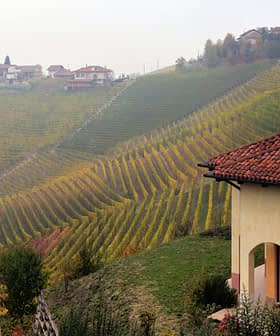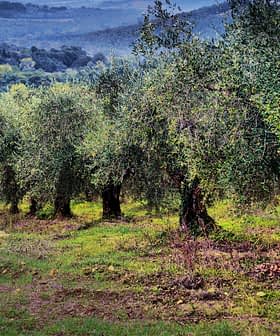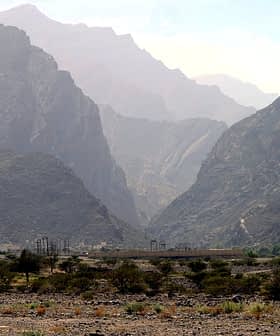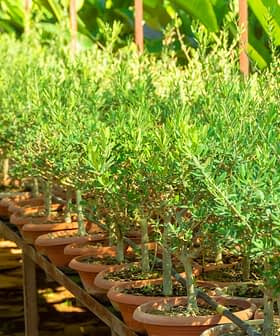For Hartmut Bauder, the second part of life has been a fruitful time. Mr. Bauder, a German entrepreneur who in a previous life worked as a manager for chemical company BASF, settled in Nepal after retirement to put up the country’s first olive plantation.
Mr. Bauder, who has a Nepalese wife, developed a love affair with olives early on in life. The setting for the romance was Provence in Southern France, where Mr. Bauder grew up and fell in love with all things Mediterranean. When he retired at age 57, he looked to form a business that he could grow with his wife.
An Italian olive project on the foothills of the Himalayas in northern India served as the template for Mr. Bauder’s venture. The project, which was launched in Himachal Pradesh, became subject to close scrutiny from Mr. Bauder. He regularly visited the site and consulted with the project’s resident experts.
With the help of Nepalese friends, Mr. Bauder invested NRs 17 million (about $240,000) to form Himalaya Plantations in 1994. For most of its existence, profit has eluded the company, causing the venture to continue adding equity. Currently, Mr. Bauder holds 80% of the company’s NRs 32 million ($450,000) equity. Himalaya Plantations just had its first profitable year.
Olives, like wine, depend on the “terroir” or the growth factors of its location. This includes the soil, water, weather, temperature, clean air and altitude of the area where the fruits are growing. Mr. Bauder said that olive production in Nepal is unique because the climate is the exact opposite of Europe. “The main differences are the latitude at which we grow olives, the altitude and the climate. Europe has sun in summer and rains in winter, in our area it is the reverse,” Mr. Bauder said.
Except for three months of monsoon weather, Nepal has abundant sunshine for most of the year. Temperatures range from ‑2 degrees Celsius in January to 35 degrees Celsius during the summer months.
Mr. Bauder chose Chitlang Valley as the home for Himalaya Plantations. Chitlang Valley, which is located three hours south of Kathmandu, is an idyllic location that is exclusively agricultural in spite of its proximity to the Nepalese capital. The company has an eight hectare-plantation that contains 2,000 trees.
“When starting to look for an ideal place, we set a few criteria: not more than three hours driving distance from Kathmandu, it must have an altitude up to 2000 meters (6,562 feet) above sea level in order to get enough chill in winter, terraces facing south for maximum sunshine and availability of roads and electricity,” Mr. Bauder said.
Oddly, Mr. Bauder said that he was never sure if Himalaya Plantations would turn a profit. “We definitely did not know whether we would see part of our money come back,” he said. That didn’t stop him from doing all he can to make Himalaya Plantations a viable business. Together with friends from Italy, he checked local conditions to see if it was indeed possible to grow olives in Nepal. Skeptics insisted that a Mediterranean climate is required for growing olives. Mr. Bauder saw things differently, due to knowledge that olives can grow in poor soil.
To start with, Mr. Bauder bought ten hectares of land in two separate areas in Chitlang Valley, which he later named Tuscany and Vinci after Italian towns famous for olive oil cuisine.
Himalaya Plantations has had a long struggle with anthracnose, a common fungus that is the bane of olive farmers around the world. The disease, which has no cure, has long been a problem for olive farmers in South America, Australia and South Africa. The fungus had forced the company to harvest ahead of time, thereby limiting olive oil production.
After years of not turning a profit due to the disease, Mr. Bauder considered giving up on Himalaya Plantations. Things changed when Mr. Bauder met Gideon Peleg, an Israeli expert who works as the technical director of the olive project in Rajasthan in Northern India. “(He) told us that he does not see any reason why we should not succeed in Nepal,” Mr. Bauder said.
Himalaya Plantations entered into a three-year contract with Peleg. Since he was hired, Peleg introduced tensiometer-controlled individual drip irrigation and changed the company’s techniques for fertilizers and pruning. The changes have yielded a harvest of eleven tons of olives from 1,100 trees this year, giving the company its first profitable year.
Mr. Bauder eventually wants to influence a change in food culture in Nepal. Low quality Spanish oil is popular in the country, with extra virgin olive oil still a rare luxury. Olive oil, which offers a number of health benefits can improve the health of poor people even in small amounts.
“Neither in India nor in Nepal (was) good olive oilavailable,” said Mr. Bauder. “Our intention was to bring this culture to Nepal and make it available to local farmers.”
The second part of Mr. Bauder’s life is in for a harvest. This time, it seems it would be a profitable one.








